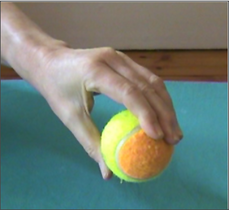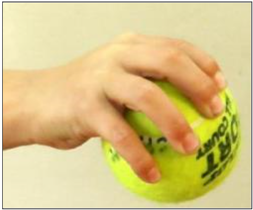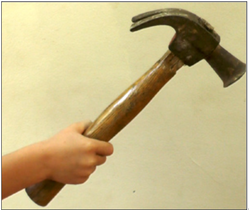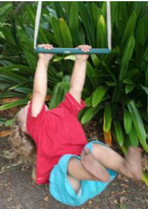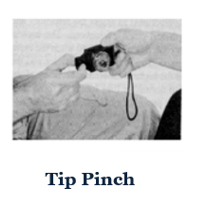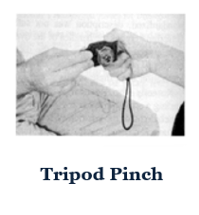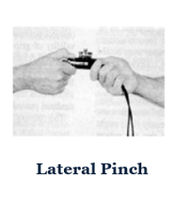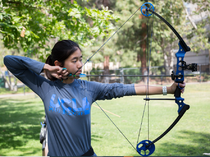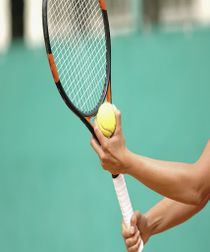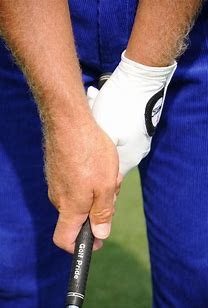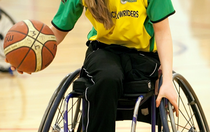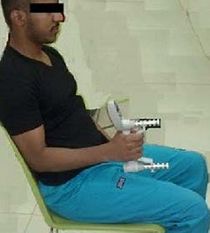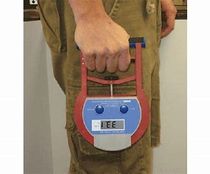Sporting Hand and Wrist - Why Power and Pinch Grips Matter
Types of Grip[edit | edit source]
The hand-wrist represents the most sophisticated tool in the human being. Hand function and strength are important elements in day to day life and participation in sports [1].
1-Power Grip: closing a hand with the thumb in opposition to all other fingers together generates a power grip[2].
A-Lumbrical grip
B-Spherical grip
C-Hammer grip
D-Hook grip
| Lumbrical grip | Spherical grip | Hammer grip | Hook grip |
|---|
2-Pinch grip: generated by pressing the thumb pulp against the pulp of the index, middle, ring, and little fingers’ distal phalanges[1].
A-Tip Pinch: index pressing against the thumb
B-Tripod Pinch: adding the middle finger
C-Lateral Pinch, also known as key pinch: achieved by pressing the thumb pulp against the lateral aspect of the proximal interphalangeal joint of the index finger. In this grip, the thumb is going into adduction and flexion[2]
| Tip Pinch | Tripod Pinch | Lateral Pinch |
|---|
Grip in Sports[edit | edit source]
Different sports require different grips, often differs between hands. If you are involved in sports rehabilitation, understanding the type of grip and involvement of the thumb is important to measure the strength and address any related injuries.
Here are some examples of different grips used in various sports[2]:
Bow and arrow: the lead hand holding the bow and keeping it stable will use a power grip. Whereas the backhand, pulling the string, also in power grip but the thumb is less involved going into more adduction.
Raquet sports such as tennis: hand holding the racket using a power grip and the other hand holding the ball in a pinch grip. By changing the grip, the movement and the force change.
Golf: Lateral pinch or key grip is used but that could change during the game depending on the movement and how much strength is required.
Wheelchair sports, for example, basketball: the hand holding the wheelchair would require more strength from the thumb for stability. the other hand holding the ball would use a spherical grip in which there will be cupping at the wrist and adduction at the thumb.
Weight lifting: the use of a hook grip is recommended in weightlifting movements[3]
Measuring Grip Strength[edit | edit source]
Considerations:[edit | edit source]
Dynamometer[1]: the Jamar and the Takei are the most common studied dynamometers in the literature.
The Jamar dynamometer is considered to be the gold standard for documenting manual grip strength. It is comprised of:
- an adjustable anatomical rigid handle
- hydraulic system
- analog display
The Takei is a valid and reliable tool to measure power grip. It is comprised of:
- Adjustable rectified
- Complacent handle shape
- Electromechanical system
- A digital or analog display
When testing strength, it's good to note the associated symptoms and the difference between the right and left hands
Testing for 3 times. A tip: start with the non-painful side then move on the other hand and alternate the testing between hands for three times
Looking for the peak force referring to the best number. Some people might be able to generate a high number on the strength test but then the number lowers due to fatigue or they take few repetitions to generate the force
Testing position:
1- elbow in a 90-degree angle: helps to generate the highest peak. However, having the forearm in mid-position could lead to contraction of the brachioradialis muscle and the movement will not be generated purely from the hand.
2- testing from straight elbow position and wrist in neutral isolate hand muscles.
Comparing to the other side rather than how strong it. Consider the element of chronicity could lead to weakness due to reciprocal inhibition [2]
Rehabilitation of Grip[edit | edit source]
References[edit | edit source]
- ↑ 1.0 1.1 1.2 Gatt I, Smith-Moore S, Steggles C, Loosemore M. The takei handheld dynamometer: an effective clinical outcome measure tool for hand and wrist function in boxing. HAND. 2018 May;13(3):319-24.
- ↑ 2.0 2.1 2.2 2.3 Gatt I. Sporting Hand & Wrist - Why Power & Pinch Grips Matter. Physioplus Course 2020
- ↑ Oranchuk DJ, Drinkwater EJ, Lindsay RS, Helms ER, Harbour ET, Storey AG. Improvement of kinetic, kinematic, and qualitative performance variables of the power clean with the hook grip. International journal of sports physiology and performance. 2019 Mar 1;14(3):378-84.
